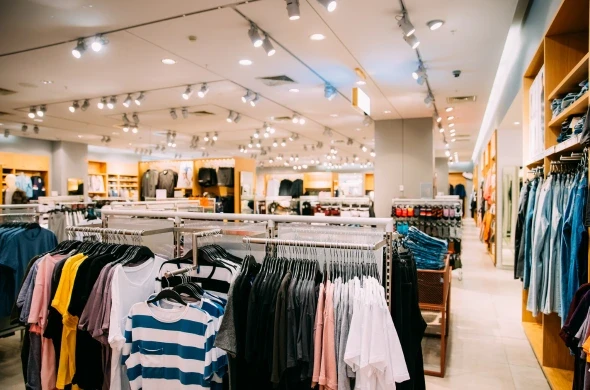Advancements in technology and consumer research have equipped retailers with incredible access to consumer data. This data offers detailed insights into consumer behaviors, preferences, and biases. But having access to data isn’t enough. Knowing what key performance indicators (KPIs) are worth tracking gives the retailers insight into whether or not their business is moving in the right direction. When the right metrics are analyzed, they can help retailers understand how to optimize their category management and retail merchandising to improve sales.
What is Category Management and Retail Merchandising?
Category management and retail merchandising are the foundational principles for managing merchandise in a retail environment. Providing what your customer needs starts with understanding these two retail concepts.
Category management applies to managing product categories by looking at units and customizing them to meet customer needs. The idea is to have a retailer break down their range of products into discrete groups of similar or related products known as product categories. Improving category management makes it easier for your customers to navigate your store to find what they need.
Retail merchandising is how retailers, brands, and manufacturers make their merchandise available in stores. Successful retail merchandising requires detailed and ongoing planning, implementation, management, and research to keep pace with changing consumer demands. Understanding the different merchandising types available will help you best address your customer’s needs.
Merchandising Types
Merchandising can be categorized according to different criteria, but the most common types of merchandising include:
- Product merchandising: All promotional activities used to promote and sell a product.
- Retail merchandising: The different ways retailers, brands, and product companies make their merchandise available in stores.
- Visual merchandising: Using floor plans, lighting, displays, technology, user experience (UX), user interface (UI), and other visual elements to attract customer attention.
- Digital merchandising: All promotional activities used to promote and sell a product online.
- Omnichannel merchandising: Creating a consistent customer shopping experience across brick-and-mortar, eCommerce, and third-party stores.
8 Important Retail Merchandising KPIs in Category Management
Knowing which key performance indicators your business should be looking at is just as important as tracking them accurately. Regardless of which retail market you serve, there are eight important KPIs that can help grow your retail business.
Fixations & Gaze Points
Fixations and gaze points are basic units of measurement used in eye-tracking research to determine what products do well at drawing consumers’ attention. A gaze point is an individual record of the customer’s gaze at a given moment. Tracking this data gives retailers valuable insight into what steps they can take to improve product recognition, positioning, and discoverability.
Fixation Duration
Knowing how long a product or display keeps a consumer’s attention is an essential retail metric to track. Specifically, tracking your customer’s attention span via average fixation duration and first fixation duration will give you critical insights into their preferences.
Average fixation duration is the amount of time a customer looks at something to help you determine if marketing efforts are working or if there might be any confusion about the product. First fixation duration signifies how long a customer looks at something for the first time, and it gives insight into what draws your customer’s attention.
Customer Traffic
Customer traffic is the act of measuring your retail stores foot traffic so that you can make informed decisions for optimizing your store layout, experience, and interface. Tracking consumer traffic can help retailers determine where to place products to increase sales.
Customer traffic is tracked using heatmap visuals, in-store cameras, cookies and trackers. These methods can help researchers analyze which areas of the retail environment digitally or instore draw the most customers and the most popular journeys taken.
Customer Stopping Power
Eye-tracking can be used to track the average fixation duration spent with an ad, product, or point-of-interest, also known as customer stopping power. It measures how well a product or display makes a customer stop, pay attention, and ultimately purchase.
Customer stopping power informs retailers on how well they attract their customers’ attention. Increasing stopping power is a powerful metric for having more engaged shoppers, leading to more purchases.
Total Users Noticed
Total users noticed is the ratio of how many customers viewed a product or ad out of total customers. It is useful for evaluating what types of people are drawn to a particular product and how well it appeals to the general public.
Total users noticed is a valuable metric used by advertisers to determine what product messaging or visuals draw the most people to look at an ad. It can help understand what products, ads, and points of interest attract the most attention, and it can inform what products are most attractive to most customers.
Number of Revisits
The total number of revisits is a useful metric for counting how many times a shopper revisits a particular spot. The number of revisits helps researchers decide which areas repeatedly attract consumers but ultimately move on without making a purchase. This data can pinpoint retail areas that may be appealing or confusing to consumers so that changes can be made.
Conversion Rate
Conversion rate is the number of visitors who make a purchase compared to the total number of visitors to your store. The conversion rate tracks what customers buy and their average transaction amount. Or, put simply, how well your store converts visitors into buyers.
The conversion rate allows retailers to forecast their profitability by providing insight into what factors turn shoppers into buyers. A keen understanding of your conversion rate is essential to converting store visitors into customers.
Sales Per Square Foot
Tracking your sales per square foot will help you identify how effective your store uses its retail space. Retail sales per square foot is a good indicator of store productivity, and it can signify if you’re making good use of the space and fixtures in your shop. Specifically, knowing your sales per square foot can help you better understand what areas of your store are performing well so that you can optimize your store and merchandise layouts.
Retail Consultancy Services
Ollen Group is one of the leading retail design firms in the Middle East & Africa region (MEA) offering consumer products consulting services with turnkey solutions from strategy to execution. Our retail strategy consultant will help your through your journey.
Read our latest insights, ideas, and perspectives that explore the trends shaping the future of business and society. Our consultancy services go hand-in-hand with these insights, confirming our position as industry leaders. Get in touch to find out more about our consulting services and industry expertise.



